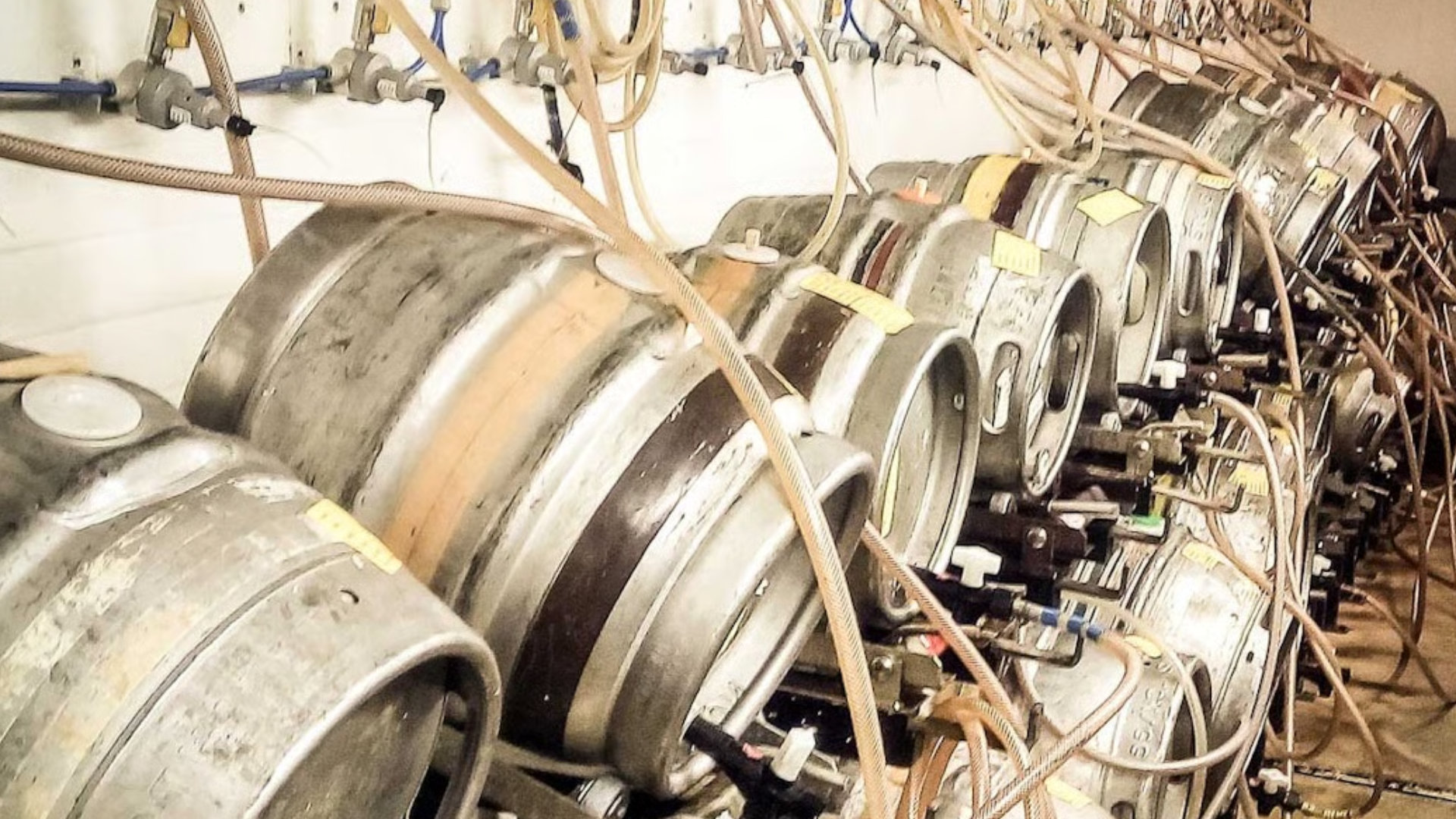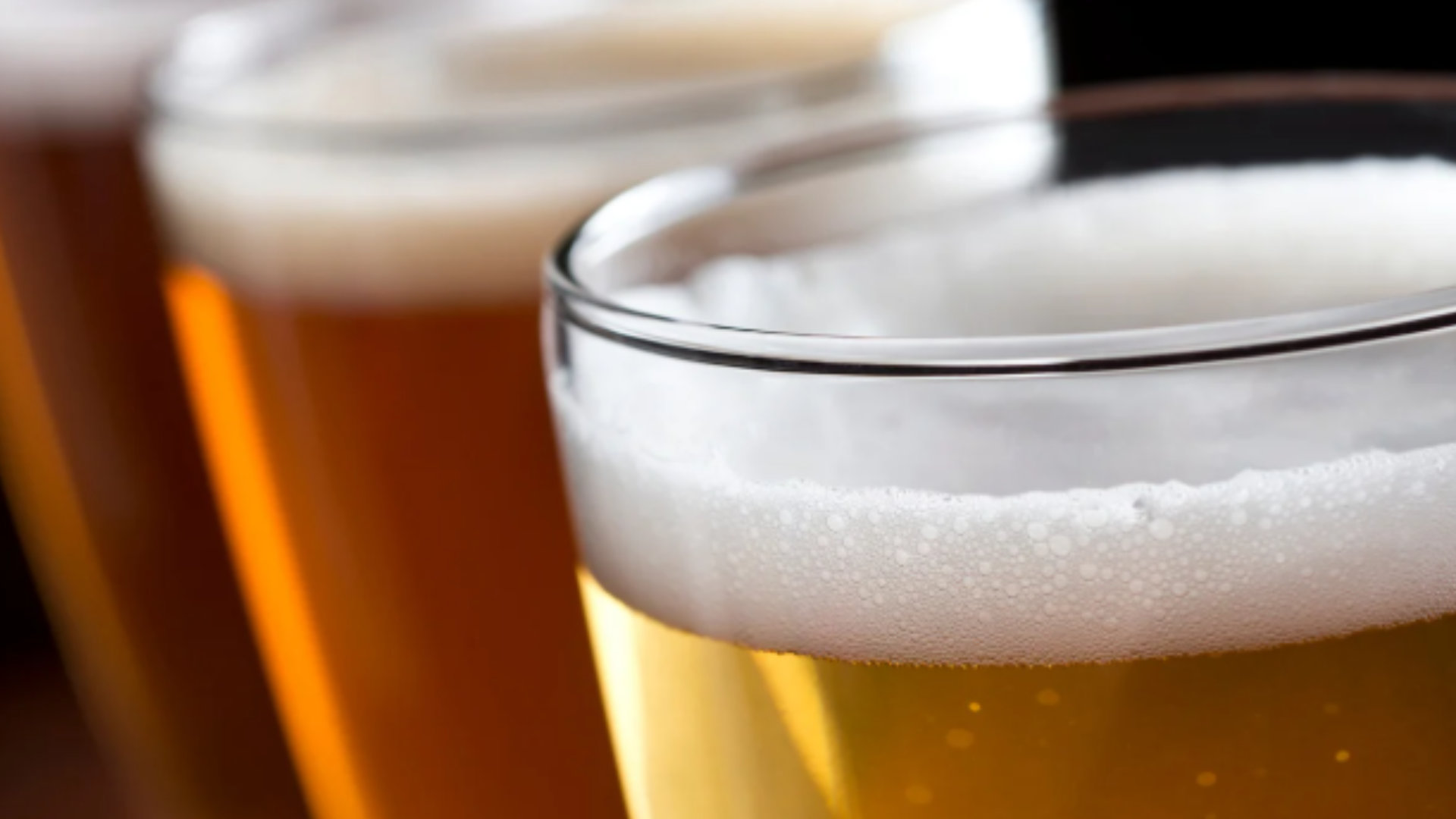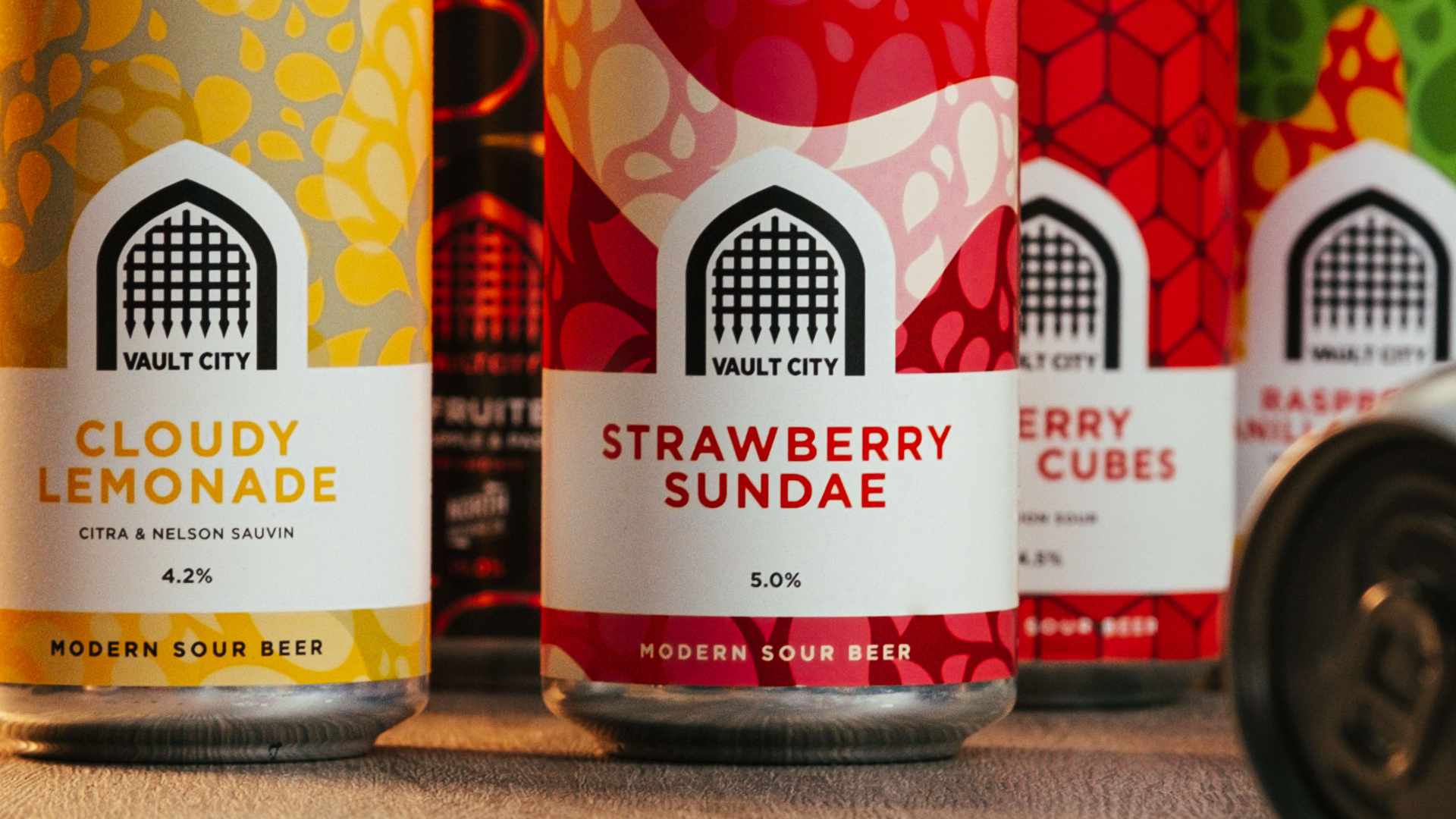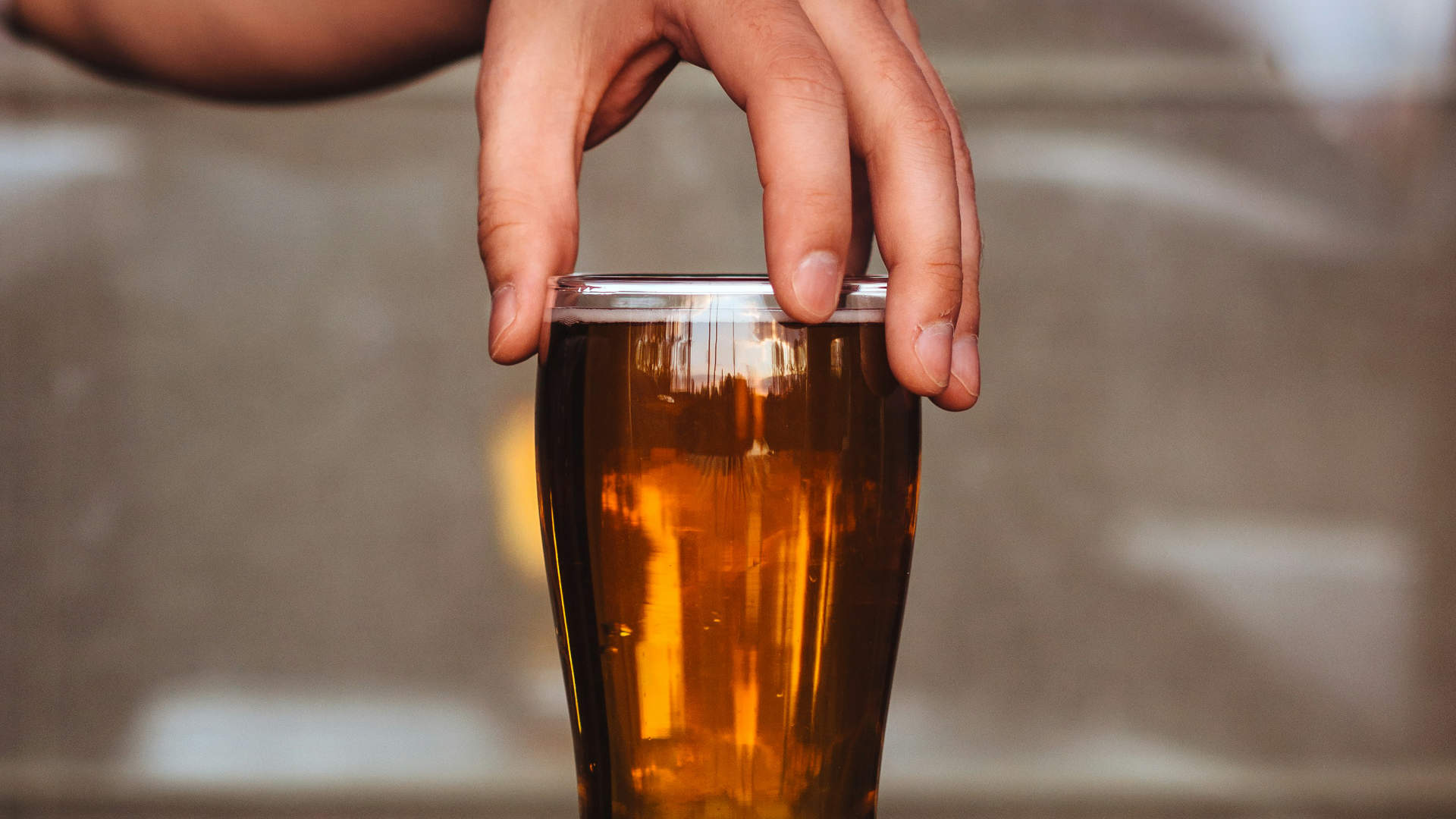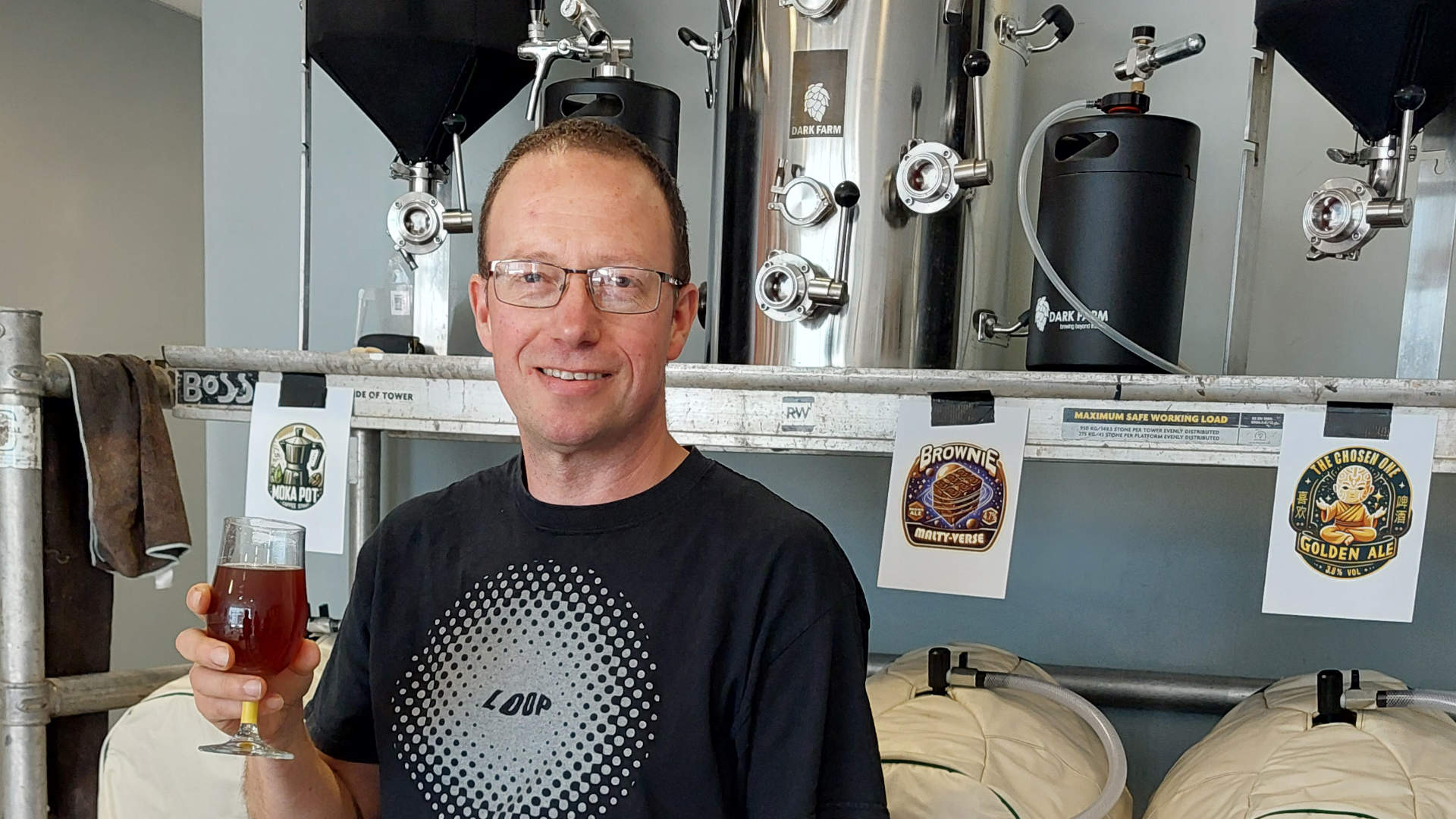Ever since we met Tristan through Aberystwyth Homebrew Club, we’ve been plotting to get an interview with him. This homebrewer really knows what he is doing! So we were keen for him to share his knowledge and interest in fermenting, brewing and growing with you. Tristan was also one of our guest brewers for Aber Beer Fest, and created the popular Dragon’s Blood Sour Cherry Ale. So you might have already heard a bit about him. Time to discover more… Â
Tell us about yourself. Where are you based and for how long have you been homebrewing? Â
I live in Ceredigion, West Wales, where I retired to after a career as a university researcher and nutritionist to the food industry. My wife and I live on a smallholding where we rear animals such as sheep and chickens and grow our own vegetables and fruit. I’ve been homebrewing for most of my life actually, now I think about it, so for over 40 years. Â
What’s your background and how did you get into homebrewing? Â
I was quite studious as a child and really into science of one sort or another. At university I studied Biological Sciences and followed that with a MSc and a PhD in the areas of human health, exercise and nutrition. I was then a university researcher for a few years until I got a job as the UK nutritionist for a global food company.Â
I started making country wine with my dad when I was probably about 8 years old. We used to walk along hedgerows in the fields around our home in Pembrokeshire and pick whatever seasonal fruit was available. I’d then help Dad crush the fruit, pour the juice into fermentation barrels and watch as he poured this yukky brown frothy liquid into it all before we gave it a stir. We let it do its magic and a few weeks later dad was very happily sipping on a glass of something we’d made together. Obviously I didn’t drink it myself at the time, although I do recall taking sips if something smelled particularly nice; blackberry wine was my favourite. Â
Nowadays, over 40 years later, I’m still pouring essentially the same kind of frothy brown liquid into not only fruit juices, but also malted barley solutions or diluted honey to produce my own wines, ales and meads. When I moved away from home my most accessible brewing options were cider and beer kits from Boots or, if I was lucky, a more specialist homebrew shop. It wasn’t until I started earning a bit more money and had set up home that I invested in the type of kit where I could move to all-grain brewing. I’ve been doing that for almost 20 years.Â
What kind of brews do you make?Â
These days it’s mostly all-grain full mash ales of various styles; from single-hopped Pale Ales, through robust IPAs flavoured with New World hops, right up to more complex brews such as Imperial Stouts or a Black IPA, one of my favourite styles. I also tend to brew at least one beer a year that includes the addition of fruit in the recipe, usually something that I’ve grown or foraged myself. Over the years I’ve made ales with blackberries, raspberries, blueberries, mango and bullace. I’ve even made a honey beer using a generous amount of added basil!Â
My homebrews have varied in strength from about 3.2% up to some of my more “experimental†recipes that have exceeded 16% A.B.V. As I mentioned before, I also make cider occasionally. When we moved to Ceredigion just over 10 years ago, we planted a small orchard of cider and eating apples, along with a few perry pear trees. They are only now starting to give us a useful harvest of fruit for juicing, but if we’re lucky I think we may get a few gallons of juice to ferment this year. Although not strictly “brewingâ€, I do also make some fruit liqueurs, often using bruised fruits or waste fruit materials e.g. cherry stones that would otherwise be composted. It’s amazing what can be created with the addition of some sugar and cheap vodka, whisky or brandy, oh and a little patience!Â
Any other brewing ambitions that you look forward to achieving one day (e.g. trying or perfecting a specific/unusual style, using certain ingredients etc)?Â
As you know, I like to eat and drink things that I’ve had a hand in growing myself. I have been growing hops in my garden and more recently in my polytunnel, and I’ve added these to many of my recent brews. One thing I’ve thought about doing is making an ale out of almost entirely self-produced ingredients. I’m lucky enough to have a natural spring-fed well in one of my fields, I have the hops and fruit, so I really need to look into how to grow barley on my land too, maybe even to malt it myself. On a very small scale of course, it would become too big a task otherwise! I’d probably use a commercial yeast though, some things shouldn’t be left to chance.Â
What’s the most surprising thing that has happened either while brewing or in the end product?Â
Oh, I’ve had my fair share of homebrewing disasters, from overflowing fermentation vessels to glassware shattering because I forgot it wasn’t heatproof. I think the biggest surprise is discovering how well a beer can age in a bottle if it’s left alone and forgotten for a number of years. Several years ago I brewed a ginger-infused bitter, it was okay, but nothing outstanding. I gave various friends some bottles of it and a few years later, when we were visiting, we cracked open an unlabelled bottle with a cryptic letter/symbol scrawled on the cap. It turned out to be the very same ginger bitter and it had mellowed into something exquisite, smooth with a slow, warming ginger glow.Â
Do you have any homebrew tips that you wish you had known when you were starting out?Â
I’ve learned a lot from my mistakes (and there have been a lot of them!). I’m tempted to say “don’t add finings to a wheat beer, remember it’s meant to be cloudy, you idiot!†(true story). My main tip would be to experiment with your brews, stray away from someone else’s recipe, but keep copious notes, just in case you create something incredible.Â
What was the starting point for your Dragon’s Blood Sour Cherry Ale?Â
Gareth asked me if I’d like to brew something for the first Aberystwyth Beer Festival and I jumped at the chance! I initially thought about making a well-hopped Nelson Sauvin IPA, because it’s one of mine and Gareth’s favourite hop varieties. I’ve a recipe I’ve used a couple of times before and it’s always been well received. The same evening, however, at a meeting of the Aberystwyth Homebrewing Club, we had all sampled a bottle of my “Bullace Special Prize†Imperial Fruit Porter and it got me to thinking about making something special that I hadn’t attempted before. I love some of the Belgian fruit beers, especially Kriek (cherry) beer, which is made using naturally-occurring wild yeasts. That was probably a bit ambitious for my first attempt at something to be sampled by the general public, so I decided to give it as much authenticity as safely possible by using real cherries and a hefty dose of sour cherry concentrate to give it that necessary tartness in this style of beer.Â
How do you calculate the end alcohol value when adding fruit in either the primary or secondary fermentation?Â
As a nutritionist it was literally my job to know levels of sugars in foods and that is the starting point in the calculation. There are resources in printed and digital form that can tell you the sugar content of almost any food. I often use a printed compendium of food content values I obtained in my job, but there’s also a wealth of online information, such as the USDA database, which has lots of nutrition values available. If you know the concentration of available sugars in the fruit and assume it is all converted by the yeasts to alcohol then you can perform a quick calculation (there are a lot of online calculators that convert sugar content to % alcohol) that will give you the contribution of the fruit to the final A.B.V. of your brew.Â
Top tip when brewing with fruit?Â
For most situations freeze your fruit first, then defrost it thoroughly before you brew with it. Not only will it reduce the chance of insects and bacteria spoiling your finished product, but the ice crystals formed in the fruit cells burst the cell walls, making it much easier to crush/press the fruit and allow as much of the fruit sugars to be fermented.




